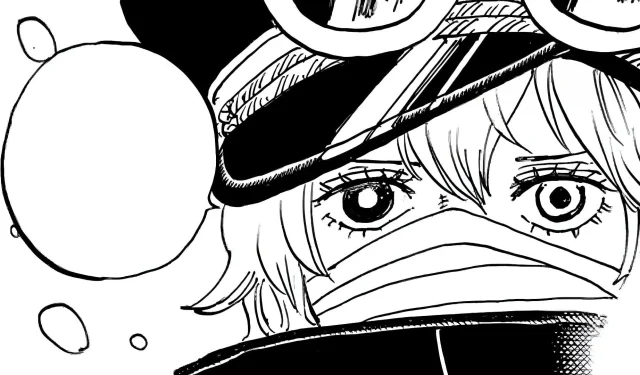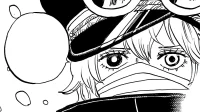In the expansive universe of One Piece, the introduction of Gunko, the mysterious God’s Knight from Elbaf, has ignited considerable speculation and discourse among fans. One prominent theory suggests a familial bond between Gunko and the series’ protagonists, specifically identifying her as the daughter of Monkey D. Dragon and sister to Monkey D. Luffy. This hypothesis, while intriguing, may be overshadowed by various interpretations that align more cohesively with Eiichiro Oda’s overarching narrative.
Gunko embodies a duality that is evident in both her unique aesthetics—such as her heterochromatic eyes—and her affiliations, which span the realms of arrows, drums, and revolutionary ideals. This complexity positions her as a pivotal figure whose destiny may influence the narrative’s progression. As we explore her symbolism and connections, we might uncover elements that resonate with broader themes of freedom and oppression, integral to the fabric of One Piece.
Disclaimer: The following article represents speculative analysis based on the author’s interpretation.
Exploring Gunko’s Duality: A God’s Knight Amidst Conflicting Forces
Gunko’s duality is reflected in her striking appearance, particularly her mismatched eyes—symbolizing a character caught between contradictory forces. This theme aligns with her identity as a God’s Knight, one who appears uneasy in her appointed role. Notably, her lack of the “Saint”designation sets her apart from the other Knights, indicating a sense of alienation from the elite ranks of the World Government’s warriors.
Her name carries significant implications: the term “war drum”is juxtaposed against Joy Boy’s “drum of liberation,”while the interpretation of “army child”suggests a military-bred background. The correlation of “gun”in her name with “Kakumei-Gun”(Revolutionary Army) further strengthens textual connections to Dragon’s formidable organization.
The power of her character is accentuated by her Devil Fruit, the Aro Aro no Mi. In the world of One Piece, the symbolism of arrows is profound. Imu, the covert leader of the World Government, wields arrows in attack, linking Gunko with the overarching conflict between the oppressive regime and the followers of the Will of D—a legacy she seems to embody.
Design elements further illuminate Gunko’s character. Her outfit, reminiscent of a school uniform, features distinct sleeves that resonate with the word “kami,”meaning both “sleeve”and “god”in Japanese. This aspect plays on her role as a God’s Knight, while her signature goggles bring to mind Revolutionary Army styles and evoke Zoro’s symbolic moment in Skypiea, where he cast aside the concept of divinity while donned in similar eyewear.
Gunko’s Inner Conflict: Caught Between Indoctrination and Liberation
Recent chapters reveal more about Gunko’s character, showcasing her love for food and music, contrasted sharply by her bandaged appearance—possibly indicative of her emotional and psychological restraints. The inquiry posed by Saint Summers regarding her potential discord with the current state of the world positions her as a candidate for defection in upcoming conflicts.
While the theory of her being Luffy’s sister surfaces persistently, a more compelling perspective may present her as a reflection of Luffy’s path under alternate circumstances. Should she have been raised within the confines of the World Nobles or the Government as an “army child,”she personifies the systematic manipulation of youth—a stark contrast to Luffy’s quest for freedom.
Moreover, her trepidation regarding Nika, potentially instilled through World Noble indoctrination, juxtaposes sharply with Luffy, who embodies the Sun God. The familial constructs seen within Elbaf, such as Shamrock’s relation to Shanks and Loki’s connection to Hajrudin, should not forcibly tether Gunko to Luffy as blood relatives.
An alternative narrative could position her as a protégé of Dragon or a former member of the Revolutionary Army who was captured and reprogrammed by the World Government. This theory adeptly accounts for her complex allegiances without necessitating a blood tie to the series’ central hero.
Conclusion
As we approach the climactic chapters of One Piece, Gunko epitomizes the core conflict between liberation and authoritarianism. Regardless of her lineage, her character symbolizes the essence of the narrative: individuals who ostensibly adhere to oppressive systems may internally foster the potential for revolution.
Her ultimate destiny may transcend the confines of being merely Luffy’s sister, emerging instead as a potent metaphor of how even those steeped in shadows can align with the liberating path that Luffy and the Will of D signify. As the secrets within the ranks of the God’s Knights unfold, Gunko’s inherent contradictions may culminate in one of the most captivating character arcs in One Piece.


